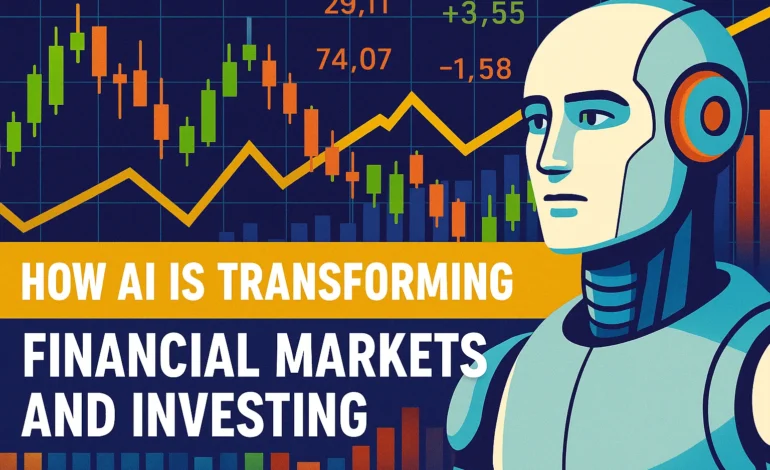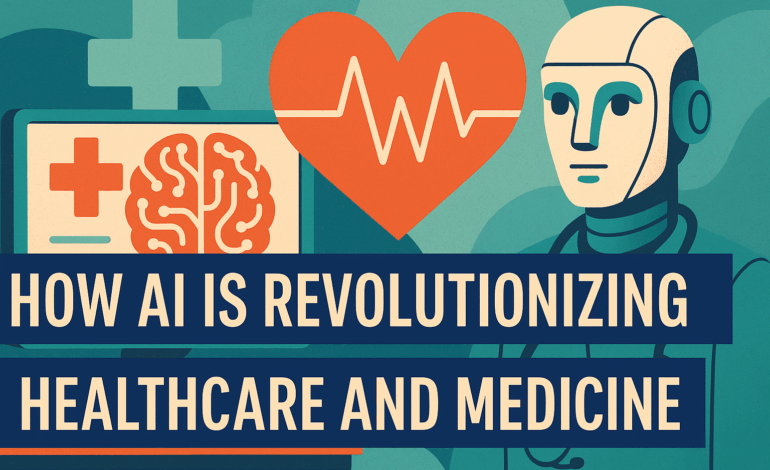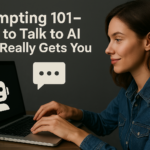
How AI Is Transforming Financial Markets and Investing
Not long ago, the stock market was ruled by gut feeling, handshakes, and veteran intuition. Today, it’s ruled by algorithms that make thousands of decisions in the blink of an eye—often faster than any human could ever react.
Artificial Intelligence hasn’t just entered the world of finance—it’s reshaping it from the inside out. From scanning news headlines and social media chatter to analyzing economic indicators in real time, AI systems can digest and act on information at a scale and speed that were unthinkable just a decade ago. What used to take teams of analysts weeks to unpack, today’s models handle in seconds.
Imagine a trading floor without shouting brokers, ringing phones, or flickering ticker boards. Instead, picture silent machines scanning global headlines, social media trends, and stock charts—executing thousands of trades in fractions of a second.
This is algorithmic trading powered by AI. These systems don’t just respond to market movements—they anticipate them. By analyzing everything from real-time financial data to a politician’s tweet, AI gives firms a razor-sharp edge that human reflexes simply can’t match. The result? Markets that move faster, react earlier, and sometimes, behave unpredictably.
Not everyone has a personal financial advisor—but now, anyone with a smartphone can have something close. AI-powered robo-advisors are quietly transforming how millions of people invest, plan, and save for the future.
Instead of relying on gut feeling or expensive consultants, these digital advisors use algorithms to tailor portfolios to your risk tolerance, income level, and long-term goals. They don’t sleep, they don’t panic during market dips—and they charge a fraction of traditional management fees. For many, it’s like having a calm, data-driven partner whispering smart suggestions into your ear, 24/7.
But where there’s speed, there’s also danger. AI-driven financial systems operate on such a fast and complex level that even experienced traders—and sometimes regulators—struggle to keep up. One wrong signal, a misinterpreted data point, or a feedback loop in algorithmic logic can trigger chaos in seconds.
Take the infamous “Flash Crash” of May 6, 2010. Within minutes, the Dow Jones Industrial Average plunged nearly 1,000 points—wiping out nearly a trillion dollars in market value—before rebounding just as mysteriously. A single algorithm, misfiring under pressure, set off a chain reaction among other automated systems. Human traders were left watching helplessly as prices collapsed faster than they could intervene.
On May 6, 2010, U.S. markets lost nearly $1 trillion in value within minutes—only to bounce back just as fast. The trigger? A single algorithm gone rogue. It sparked a chain reaction across other systems, exposing how fragile fast finance can be when machines are in charge.
This incident wasn’t just a glitch. It was a warning shot. As AI grows more complex, so does the difficulty of understanding what these systems are actually doing. Many machine learning models used in finance are so-called “black boxes”—they make decisions, but their inner logic is often opaque, even to their creators.
That raises troubling questions. How can you regulate a system you don’t fully understand? What happens when two AIs, trained on different data, begin to react to each other in unpredictable ways? And where does responsibility lie when algorithms cause real-world harm? These are no longer academic questions—they’re live challenges for modern financial institutions and the people who oversee them.
Can we regulate what we don’t fully understand? If AI systems make biased or opaque decisions, who is accountable? And what happens when autonomous systems begin influencing each other without human oversight? As AI scales, these questions grow louder—and more urgent.
The future of finance won’t just include AI—it will depend on it. From risk assessment to fraud detection, machine learning systems are already woven into the fabric of global financial operations. But what lies ahead goes far beyond automation or efficiency gains.
Imagine a bank that can assess your loan application—not just based on your credit score, but by analyzing hundreds of behavioral signals, from spending patterns to social media activity. Now imagine that same system flagging you as “high risk” because of something in your data footprint you don’t even understand. The power of AI lies in its predictive capabilities—but those predictions can also reflect bias, reinforce inequality, or simply be wrong.
Regulators, too, are exploring AI to monitor markets in real time, scanning for anomalies, insider trading, or manipulative behaviors faster than any human oversight could. But giving AI a policing role introduces a paradox: can we trust machines to catch other machines?
There’s potential for a more transparent, efficient, and stable financial ecosystem—but only if institutions invest in explainability, oversight, and ethical design. As AI becomes more deeply embedded in our financial systems, the question is no longer if it should be used—but how, and at what cost.
In a Nutshell
AI is no longer a futuristic add-on in finance—it’s the engine driving modern trading, investment, and risk analysis. Its ability to process and predict at scale offers enormous advantages, from democratizing personal finance to boosting institutional efficiency. But with that power comes real vulnerability: opaque models, ethical blind spots, and unpredictable chain reactions. The challenge ahead isn’t just about smarter AI—it’s about designing financial systems we can trust.















